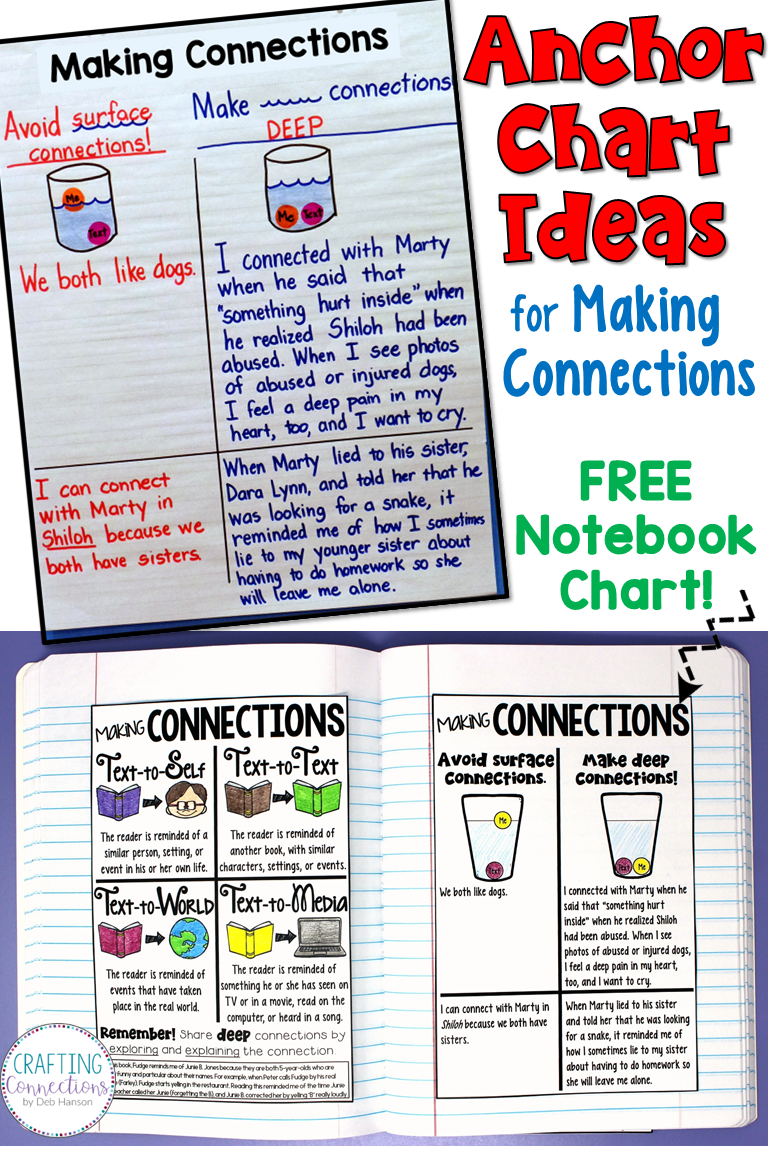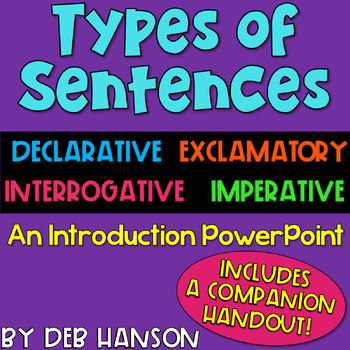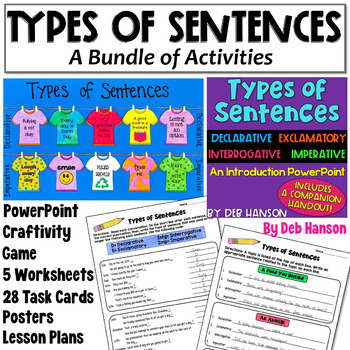I frequently create sorting activities to use with my students. I am a huge fan of sorts for two main reasons. Most importantly, sorting activities require students to be actively engaged. When done with a partner, they involve many discussion opportunities, which is music to this ELL teacher's ears! I also like sorting activities because they are so versatile. Sorting activities can be an independent activity, a small group activity, or they can be easily adapted to create a whole-class activity, depending upon your current needs. In this blog post, I am sharing my types of sentences sort with you, and explaining how I have used it in a whole-class setting. I invite you to
click on the image below to access it (it's free!), and decide for yourself how you want to use it with your students.
I designed this sorting activity to be part of a review lesson, done one or two days after the four types of sentences have been introduced. (I almost always introduce a new topic of study with a PowerPoint.) Click on the following image to view my Types of Sentences PowerPoint.
Step 1: Preparation
Before class, there are just a few items that need to be prepared. First, the four posters need to be printed and glued onto manila envelopes. (As you can see, my envelopes happen to be white.) The sentence strips also need to be printed and cut apart.
Step 2: The Lesson
To begin the lesson, I ask students to turn to a neighbor and exchange interrogative sentences. Then, I display the interrogative poster (which is glued to an envelope) by placing it on the chalk tray, and we review what we already learned yesterday about an interrogative sentence's punctuation.
I repeat this step with declarative sentences, imperative sentences, and exclamatory sentences. When this quick review is complete, all four envelopes are lined up across the chalk tray.
Now, it is time to sort the sentence strips. I tell students to take out their personal whiteboard, eraser, and marker. When everybody is ready, I pick up a strip and read it to the class. Each student writes what type of sentence it is on their marker board. (I let them use abbreviations- D, Intg, Imp, and E.) Using my popsicle sticks, I randomly choose a student to share their answer with the class. I invite the student to come forward, add the correct punctuation to the strip, and drop it in the appropriate envelope. This process is repeated with all 27 strips.
I hope you and your students enjoy this lesson! If you happen to be looking for additional activities, feel free to check out my
Types of Sentences Bundle!
-Deb
Pin this image for future reference!




























